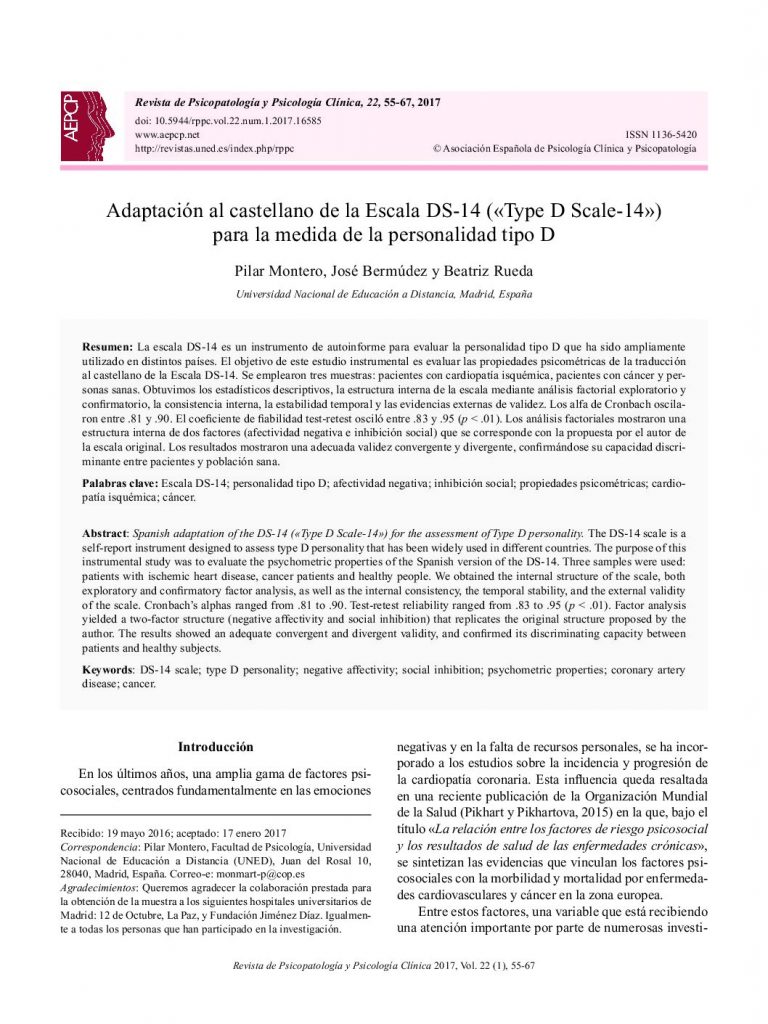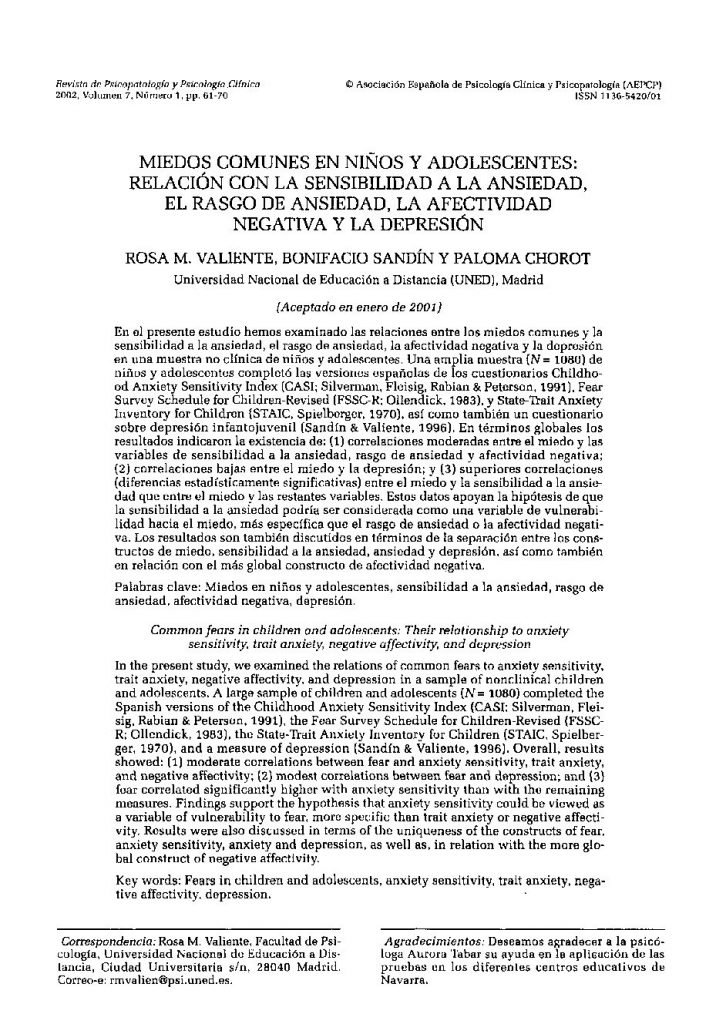Adaptación al castellano de la Escala DS-14 («Type D Scale-14») para la medida de la personalidad tipo D.

- Resultados de un programa de tratamiento psicológico grupal para la enfermedad inflamatoria intestinal.
- La Escala de Encuentro de Beneficio para pacientes cardiacos.
- Estilos de afrontamiento y generación de estrés interpersonal en adolescentes.
- Intento de suicidio y factores de riesgo en una muestra de adolescentes escolarizados de Chile.
- Dimensionality and psychometric properties of the Spanish version of the Mechanisms of Moral Disengagement Scale (MMDS-S).
- Adaptación al castellano de la Escala DS-14 («Type D Scale-14») para la medida de la personalidad tipo D.
- El trastorno dismórfico corporal: Un problema infra-diagnosticado.
The DS-14 scale is a self-report instrument designed to assess type D personality that has been widely used in different countries. The purpose of this instrumental study was to evaluate the psychometric properties of the Spanish version of the DS-14. Three samples were used: patients with ischemic heart disease, cancer patients and healthy people. We obtained the internal structure of the scale, both exploratory and confirmatory factor analysis, as well as the internal consistency, the temporal stability, and the external validity of the scale. Cronbach’s alphas ranged from .81 to .90. Test-retest reliability ranged from .83 to .95 (p < .01). Factor analysis yielded a two-factor structure (negative affectivity and social inhibition) that replicates the original structure proposed by the author. The results showed an adequate convergent and divergent validity, and confirmed its discriminating capacity between patients and healthy subjects.
La escala DS-14 es un instrumento de autoinforme para evaluar la personalidad tipo D que ha sido ampliamente utilizado en distintos países. El objetivo de este estudio instrumental es evaluar las propiedades psicométricas de la traducción al castellano de la Escala DS-14. Se emplearon tres muestras: pacientes con cardiopatía isquémica, pacientes con cáncer y personas sanas. Obtuvimos los estadísticos descriptivos, la estructura interna de la escala mediante análisis factorial exploratorio y confirmatorio, la consistencia interna, la estabilidad temporal y las evidencias externas de validez. Los alfa de Cronbach oscilaron entre .81 y .90. El coeficiente de fiabilidad test-retest osciló entre .83 y .95 (p < .01). Los análisis factoriales mostraron una estructura interna de dos factores (afectividad negativa e inhibición social) que se corresponde con la propuesta por el autor de la escala original. Los resultados mostraron una adecuada validez convergente y divergente, confirmándose su capacidad discriminante entre pacientes y población sana.




